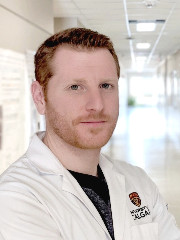
Presenter of 1 Presentation
GIARDIA DUODENALIS EXTRACELLULAR VESICLES MODULATE THE GROWTH AND BEHAVIOR OF COMMENSAL BACTERIA VIA SMALL RNAS ACTIVITY (ID 1003)
Abstract
Introduction
Extracellular vesicles (EVs) play important roles in the pathophysiology of parasites. While the protozoan parasite Giardia duodenalis can produces EVs, their exact role in the pathogenesis of giardiasis remains to be fully understood. In this study, we examined whether Giardia EVs could mediate interactions with commensal bacteria.
Methods
G. duodenalis NF EVs were isolated using Exo-Easy Kit. EVs were characterized using Nanoparticle track analysis and transmission electron microscopy. EVs Small-RNAs were characterized by RNA-Sequencing analysis. Kinetic experiments were conducted on EVs-treated E. coli HB101 and Enterobacter cloacae (human isolate). Swimming motility of EVs-treated E. coli HB101 and E. cloacae was assessed on agar. Biofilm biomass of EVs treated bacteria was investigated using the Calgary Biofilm Device. Adhesion of EVs-treated bacteria was assessed on SCBN intestinal epithelial cells.
Results
Giardia EVs exerted bacteriostatic effects on E. coli HB101 and E. cloacae (p<0.05). EVs decreased the ability of E. coli HB101 to form biofilms. Giardia EVs significantly increased the swimming motility of both E. coli HB101 and E. cloacae as well as their adhesion to the intestinal epithelial cells (p<0.05). RNase assays showed that EVs total RNAs but not proteins modulate bacterial swimming motility and biofilm formation. Small RNAs analysis revealed the presence of heat stable rRNA, miRNA, tRNA, snRNA and snoRNA.
Conclusions
This study indicates that Giardia EVs can mediate interactions with the commensal bacteria by increasing their virulence. G. duodenalis EVs, via their nucleic acid content, can trigger the formation of pathobionts, depicting a novel trans-kingdom cross-talk in the gut.
